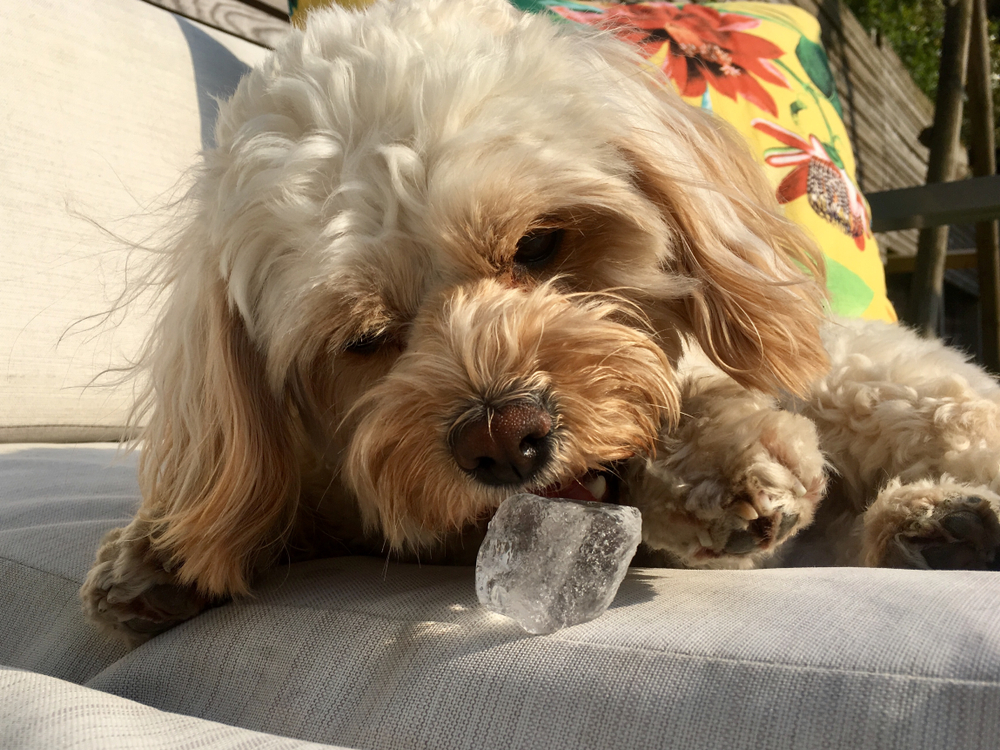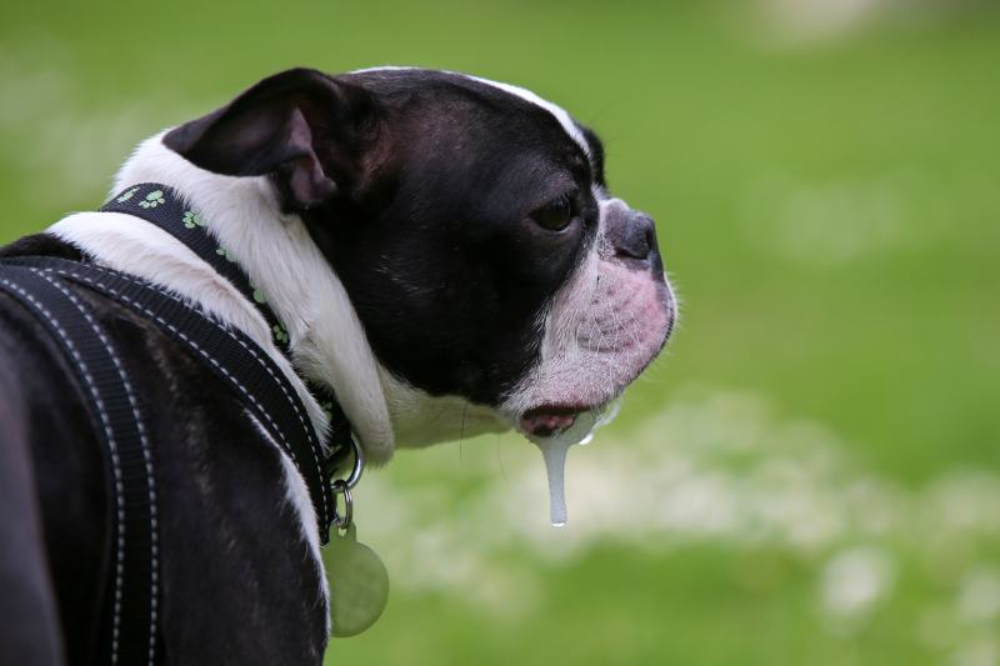Few things are more refreshing on a hot summer day than a tall glass of ice water. It lowers our core body temperature to make us feel more comfortable. Undoubtedly, seeing your dog pant with their mouth hanging wide open makes you want to offer your pup the same relief. After all, it will have the same effect on their body. Ice water is fine to offer dogs, but can dogs actually eat ice cubes?
As far as the ice cubes are concerned, your pet can eat them. They have some practical uses. However, there are a few caveats for making them safe for your dog to munch on.


Pros and Cons of Feeding Ice Cubes to Dogs
Pros
Lowering your dog’s core body temperature after exercise or being out in the hot sun is an excellent reason to give ice water to your dog. Overexertion during warm conditions can cause labored breathing and excessive panting. Remember that your pet doesn’t sweat to dissipate heat like you do. They have some sweat glands in their footpads, but panting is their primary way to cool themselves.
One concern with large-chested breeds like Boxers is bloat. This condition can occur after strenuous exercise, followed by drinking excessive water or swallowing air. It can cause their stomach to expand and twist. It is life-threatening and a medical emergency. So, giving your pooch ice cubes can provide them with the water they need but in a measured way.
Ice cubes can also offer a way to ease your dog into drinking after a bout of nausea and vomiting. Veterinarians recommend slowly offering food and water after these occurrences to ensure they can keep them down and don’t cause further upset.
You probably like cold water, and it’s likely the same with your dog. It can even provide welcome mental stimulation if you put a few cubes in their water bowl and let them figure out what they are as they paw at them.


Cons
Ice cubes have a few cons worth knowing upfront. Although it would be uncommon, ice cubes could pose a possible choking hazard, so you should keep an eye on your pup if they are enjoying a bowl of icy water.
Interestingly, compulsive ice chewing is a health condition in people called pagophagia, which often denotes a nutritional deficiency. Doctors have learned that these individuals are at risk of dental problems because of this activity. Eating ice excessively can damage their enamel, leaving them vulnerable to serious complications. Not surprisingly, tooth damage can also happen when dogs eat too much ice.


Safely Giving Your Pet Ice Cubes
We recommend giving your dog ice cubes as an occasional treat because of their potential impact on your pet’s teeth. You can reduce the risks by pulling the cubes out of the freezer for several minutes to allow them to soften a bit. Of course, only give your dog a couple at most. We don’t recommend giving them to pets with a history of dental issues.
Another ‘hot tip’ for giving your dog a cold drink is to half fill a water bowl and place it in the freezer overnight. Top it up with normal water, and you have a bowl of water that will stay cold much longer.
You can also make larger ice cubes or blocks with treats or kibble inside. This gives your dog a nice cold treat, as well as some enrichment as they puzzle their way to get to the tasty goodies inside.
We mentioned their usefulness to cool down an overheated dog. If your dog shows signs of hyperthermia or heatstroke, it’s best to reduce their temperature slowly instead of abruptly with ice. Red flags include the following:
- Drooling
- Hot body temperature
- Excessive panting
- Rapid heart rate
A better way to treat this condition is with cool, wet towels placed on your pet’s body. Keep your dog quiet and relaxed, encouraging them to drink tepid water. A fan will also help dissipate heat quickly. You should monitor your dog’s temperature using a rectal thermometer. If the animal isn’t showing signs of recovery, get them to the vet for emergency treatment, as complications can be life-threatening.




Conclusion
Giving your dog ice cubes for an occasional treat won’t hurt your pet. They may even treat them like toys and have fun batting them around in their water bowl. Ensure they aren’t too big for your dog, though, and that they don’t have sharp edges. We don’t recommend offering them to your dog regularly because of the risk of dental issues. But if offered in moderation, a few cubes to cool off on a warm day is just fine.
Featured Image Credit: sakaekrung, Shutterstock
